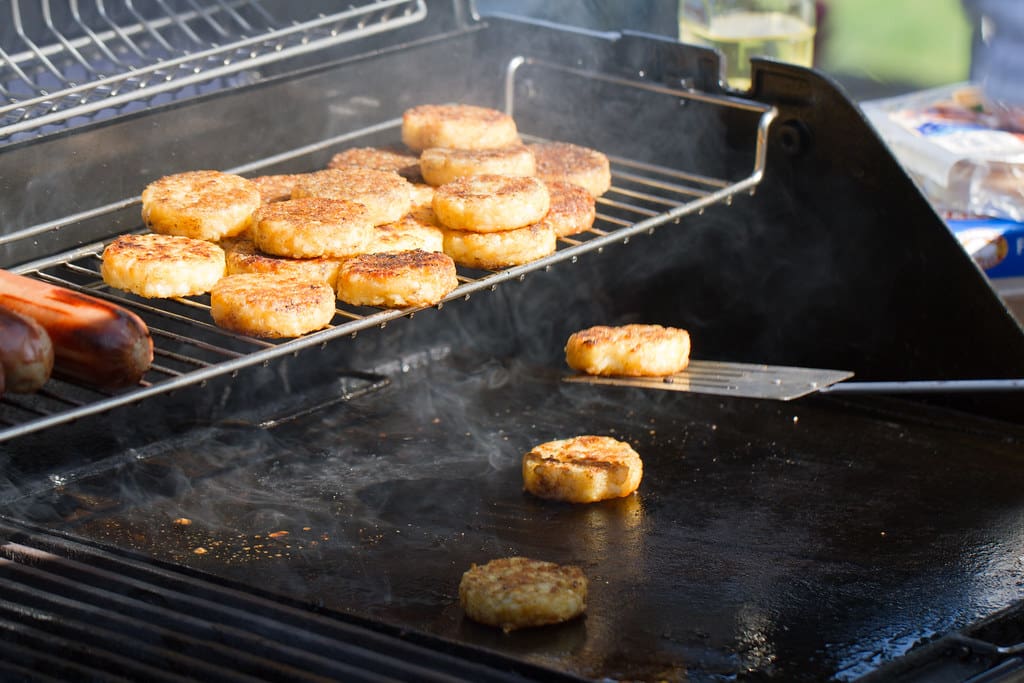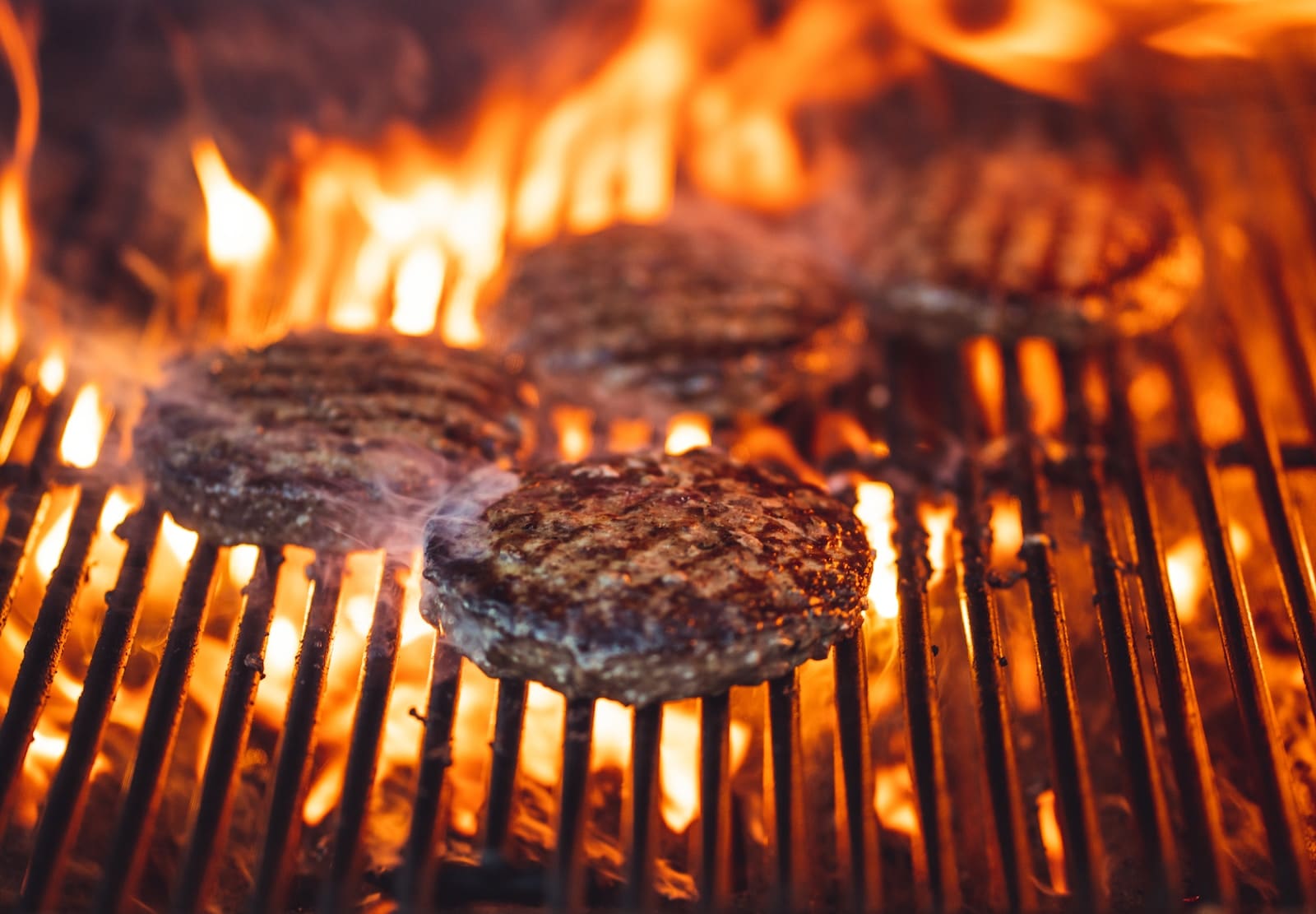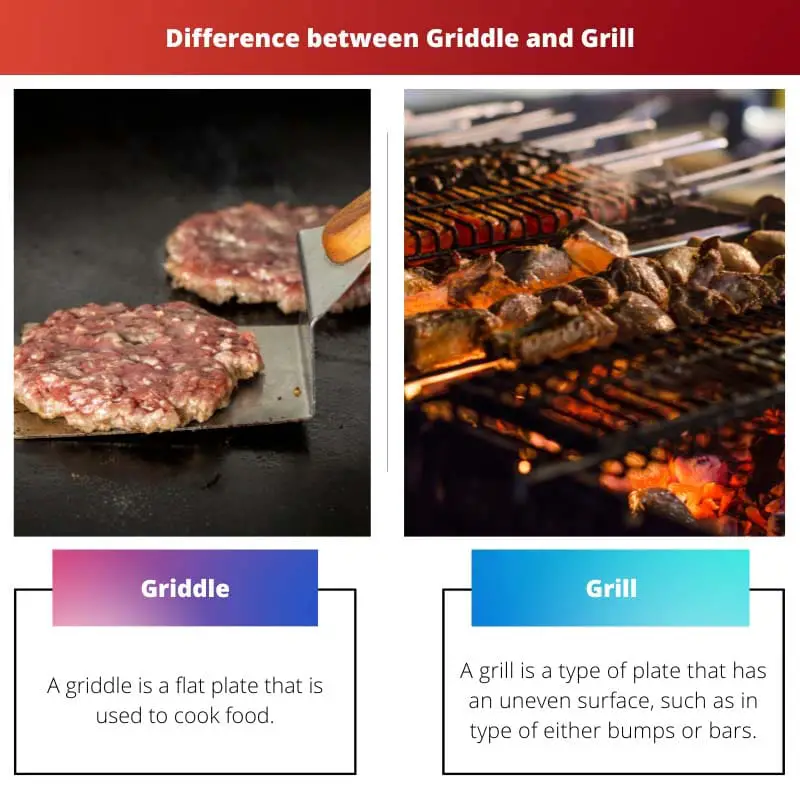There are several different methods to cook food, such as stove, oven, microwave, and more.
All these cooking methods differ from each other, and as a result, the cooked food also differs in some or the other way depending upon the cooking method.
Griddle and grill are two more ways to cook food, which might seem the same, but they have several different dissimilarities.
Key Takeaways
- Griddles feature a flat, smooth surface for cooking, while grills have raised, open grates that allow food to cook with direct heat and flame.
- Griddles are ideal for cooking pancakes, eggs, and bacon, whereas grills excel at cooking meats, vegetables, and other foods that benefit from charred, smoky flavors.
- Griddles use even heat distribution for consistent cooking, while grills use radiant heat and conduction from the grates for more varied cooking results.
Griddle vs Grill
The difference between a griddle and a grill is that in the case of a griddle, the surface is a flat plate of heat with no bumps or raised surfaces. On the other hand, in a grill, the heating pan is bumped up at certain levels, that is to say, the surface of the pan is raised on certain parts.

A griddle is a flat plate that is used to cook food.
The plate of the griddle is majorly made up of either solid iron, such as in the case of a barbecue griddle or stainless steel, such as in the case of an electric griddle.
Griddles are most commonly used in restaurants and hotels.
A grill is a type of plate that has an uneven surface, such as in a type of either bumps or bars.
The food that is supposed to be cooked is put on the grill, and then the grill is put over a heat source or fire source.
A grill can work on gas, coal, and even electricity.
Comparison Table
| Parameters of comparison | Griddle | Grill |
|---|---|---|
| Surface | The surface of the griddle does not have bumps. | A grill does have bumps or bars all over its surface. |
| Heat spread | Heat spreads evenly on a griddle. | Heat is not spread evenly on a grill. |
| Heat contact | The heat source or the flames of heat do not touch the food directly. | The heat source or flames directly touch the food when kept on the grill. |
| Temperature | The temperature used in the case of a griddle is not high. | The temperature used in the case of a grill is high. |
| Time | It takes more time for food to get cooked on a griddle. | It takes less time for food to get cooked on a grill. |
What is a Griddle?
A griddle is a type of heating pan that is used to cook food. It has a flat pan over which the food is kept, and the heat is provided in the lower portion of the pan.
However, in the current time, several different types of griddles are available, which differ from each other depending upon their structure. Some of the most popular types of griddles are solid griddles and iron griddles.
A griddle is mostly famous for roasting food over it, rather than roasting. The reason behind that is that when food is cooked over the stove or using any other cooking method, the food becomes dry and, consequently, rough in texture.
However, when the food is cooked over a griddle, it brings juiciness to the food, which many people love.
Electric griddles have been in a lot of demand as they are also easy to use, convenient, and travel-friendly.
All you have to do is put the plug of the griddle in the socket, and it will get heated.
Once it gets heated to the required temperature, one can easily cook food over it.

What is a Grill?
A grill is a very convenient and quick method for anyone who wants to cook food, or more generally, to cook food in a shorter duration of time.
The basic structure of a grill is of two different types: bumps or bars. If the grill is of bump style, then the plate of the grill would have a raised portion at a certain distance from each other.
On the rest of the parts of the plate, the surface is lowered such that the whole surface creates an up, down, and up platform.
When the heat source is turned on, the heat falls quickly onto the surface of the plate, which is lowered, and then on the surface, which is raised.
As a result, it creates an uneven distribution of heat all over the surface, resulting in faster food cooking.
On the other hand, if the structure of the grill is in bar form, then the plate of the grill would have bars at a certain distance from each other, and on the rest of the parts, there would be no surface.
In most general cases, the bars of the grill are quite thin and are at larger distances from each other, such that the distance between the bars increases. As a result, the empty portion of the grill also increases.

Main Differences Between Griddle and Grill
- Generally, the griddle is made up of cast iron or stainless steel. On the other hand, a grill can be made up of solid iron, nickel-plated steel, and more.
- The temperature required to cook food over a griddle ranges around 350° F. Whereas, the temperature required to cook food over a grill ranges about 400° F.
- The griddle is used to cook food such as pancakes, scrambled eggs, toast, and more. On the other hand, a grill is used to cook food such as chicken, sausages, corn, and more.
- A griddle is easier to use and clean. On the contrary, a grill is less convenient to use and clean.
- A griddle is not portable. In contrast, a grill can be either portable or not portable.

- https://www.science.org/doi/abs/10.1126/science.8023144
- https://www.sciencedirect.com/science/article/pii/S1364661305003232
